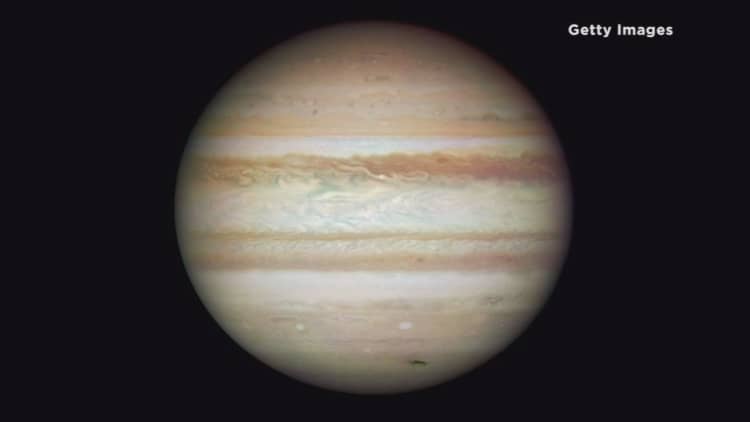
The famous swirling red eye on Jupiter's surface is extremely hot, and appears to be supplying enough heat to warm the rest of the planet's upper atmosphere, according to research published Wednesday.
And the heat may be propelled into the upper atmosphere by sound from the Great Red Spot's raging storms.
Jupiter's upper atmosphere is about 620 degrees Fahrenheit — warmer than it seems it should be, given its long distance from the sun.
Scientists have wondered as to what could be adding all that extra heat — the phenomenon has been termed the mystery "giant-planet energy crisis," according to the new paper published in peer-reviewed journal Nature.
Enter the "Great Red Spot" — a storm that has churned for 150 years or longer on Jupiter's surface. NASA notes that some observers had written of seeing the spot as far back as the 1600's, but they may have been looking at a different storm. The spot is twice the size of Earth's diameter, and its winds spin at 400 miles per hour. As the study notes, it is the largest storm in the solar system.
In the study, Boston University's James O'Donoghue and colleagues from the the United Kingdom's University of Leicester found that the atmosphere above the spot is thousands of degrees hotter than anywhere else on the planet.
O'Donoghue and his colleagues describe mapping the distribution of heat around the planet, using the NASA Infrared Telescope Facility at teh Mauna Kea Observatory in Hawaii.
Looking at the images, the team was able see the far higher temperatures right above the Great Red Spot — about 2,420 degrees Fahrenheit warmer than anywhere else on the planet
The authors said that one way the heat is making its way up into the atmosphere is through acoustic waves, sound disturbances that are produced above thundering storms in the swirling Red Spot.
On Earth, acoustic waves are thought to be the cause of hotspots in the Andes mountains, the study noted.
"On Jupiter, acoustic-wave heating has been modeled to potentially impart hundreds of degrees of heating to the upper atmosphere," the researchers wrote.
The authors call the Great Read Spot the "smoking gun" that provides the clue to solving the giant-planet energy crisis.
NASA's Juno spacecraft reached the planet earlier this month, and data from its mission is expected to begin trickling out soon.


